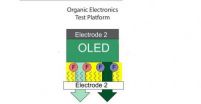(Press-News.org) The process of metastasis – a tumor's ability to spread to other parts of the body – is still poorly understood. It is not easy to determine whether metastasis began early or late in the development of the primary tumor or whether individual metastatic sites were seeded directly from the original tumor or from an intermediate site. Now a research team has developed a simple assay that can reveal the evolutionary relationships among various tumor sites within a patient, information that may someday help with treatment planning.
"If we could build a 'family tree' of all cancer nodules in a patient, we could determine how different tumors are related to each other and reconstruct how the cancer evolved," says Kamila Naxerova, PhD, of the Steele Laboratory for Tumor Biology at Massachusetts General Hospital (MGH), corresponding author of the report being published in PNAS Early Edition. "Usually that would require extensive genetic analysis with complex sequencing methods, but our methodology achieves that goal quickly and with minimal experimental effort."
Cancer researchers are just beginning to investigate the extent and significance of genetic differences among tumor cells – either cells within a discrete tumor or between a primary tumor and metastases in other parts of the body. The authors note that there are two different models of metastasis – one in which an advanced primary tumor disseminates metastatic cells late in its development, which would predict little genetic difference between primary and metastatic cells, and another in which metastasis occurs early in tumor development, which would predict significant genetic differences in metastatic cells that have evolved separately from those in the primary tumor. Some studies have suggested that the two models apply to different types of cancer, but patient data so far has been limited.
Answering important clinical questions – such as whether genetic diversity is a risk factor for aggressive tumor development or how it relates to treatment resistance – requires analyzing samples from many patients with different types of cancer. Using technologies like whole genome or whole exome (the protein-coding portion of the genome) sequencing requires specialized equipment and advanced data analysis and is still relatively expensive. The approach developed by the MGH team focuses on small areas of the human genome – so-called polyguanine (poly-G) repeats that are particularly susceptible to mutation, with genetic 'mistakes' occurring frequently during cell division. While these mutations do not directly relate to the development or progression of a tumor, they can reveal its lineage – how individual tumor cells are related to each other.
In the current paper, the authors adapt Poly-G repeat analysis – initially developed to study lineage relationships between single cells in mice – to the study of human cancer for the first time. Analyzing the poly-G profiles of primary and metastatic colon cancer samples from 22 patients revealed that how the primary and metastatic tumors related to each other was different for each patient. In some individuals there were significant genetic differences between tumor sites, suggesting early metastatic spread; in others, there was little difference between a primary tumor and its metastases. The investigators also identified instances in which the genetic profiles of metastases were similar to those of only some cells in the primary tumor, suggesting that those cells were the source of the metastases, and other cases in which the genetic profiles of metastases from the same primary differed depending on their location.
"We found that there are several paths that can lead to metastatic disease," says Naxerova, a postdoctoral research fellow in the Steele Lab. "We are now applying this methodology to address specific clinically relevant questions about the biology of metastasis in larger numbers of patients. The method is fast and inexpensive and should be applicable to other types of tumors than colon cancer."
Co-author Elena Brachtel, MD, from MGH Pathology notes that archival tissues from the files of the department were used for this study. "After diagnostic studies on tissue removed during a patient's operation are completed, the formalin-fixed paraffin tissue blocks are stored for several years. Increasingly, new molecular tests can be performed on tissue that was removed from a patient several years earlier, at a time when these tests were not yet available."
Rakesh K. Jain, PhD, director of the Steele Lab and senior author of the paper, adds, "The assay has many potential clinical applications. For example, it could be used to reliably and quickly distinguish a metastasis from a second, independent tumor. Or it could identify the primary tumor in situations where multiple lesions are present and it is ambiguous which one is responsible for seeding metastases." Jain is the Cook Professor of Radiation Oncology (Tumor Biology) at Harvard Medical School.
INFORMATION:
Additional co-authors of the PNAS report Aaron Seese and Karen Power, Ragon Institute of MGH, MIT and Harvard; Jesse Salk, University of Washington; Bardia Abbasi and Simon Kasif, Boston University; Matija Snuderl, Langone Medical Center; and Sarah Chiang, Memorial Sloan Kettering Cancer Center. The work was supported by Department of Defense grants W81XWH-10-1-0016 and W81XWH-11-1-0146.
Massachusetts General Hospital, founded in 1811, is the original and largest teaching hospital of Harvard Medical School. The MGH conducts the largest hospital-based research program in the United States, with an annual research budget of more than $775 million and major research centers in AIDS, cardiovascular research, cancer, computational and integrative biology, cutaneous biology, human genetics, medical imaging, neurodegenerative disorders, regenerative medicine, reproductive biology, systems biology, transplantation biology and photomedicine.
Fast, simple-to-use assay reveals the 'family tree' of cancer metastases
Determining relationships between primary tumors and metastatic cells could provide clinically useful information
2014-04-21
ELSE PRESS RELEASES FROM THIS DATE:
Scientists find key steps linking dietary fats and colon cancer tumor growth
2014-04-21
Scientists have shown new genetic evidence that could strengthen the link between the role of dietary fats with colon cancer progression.
The study, led by Arizona State University researcher and physician Dr. Raymond DuBois, M.D., Ph.D., has identified a molecular culprit, called peroxisome proliferator-activated receptor delta (PPAR delta), which, when deleted in a mouse model of colon cancer, stopped key steps required for the initiation and progression of tumor growth.
"This study has shown without a doubt there is a new function for a key molecule, PPAR delta, ...
Ecology team improves understanding of valley-wide stream chemistry
2014-04-21
A geostatistical approach for studying environmental conditions in stream networks and landscapes has been successfully applied at a valley-wide scale to assess headwater stream chemistry at high resolution, revealing unexpected patterns in natural chemical components.
"Headwater streams make up the majority of stream and river length in watersheds, affecting regional water quality," said Assistant Professor Kevin J. McGuire, associate director of the Virginia Water Resources Research Center in Virginia Tech's College of Natural Resources and Environment. "However, the ...
A plague in your family
2014-04-21
For the first time, researchers have studied the Black Death bacterium's entire family tree to fully understand how some of the family members evolve to become harmful.
Contrary to popular belief, the team found pathogenic members of this bacterial family do not share a recent common disease-causing ancestor, but instead, have followed parallel evolutionary paths to become harmful.
The Yersinia family of bacteria has many sub species, some of which are harmful and others not. Two of the most feared members of this bacterial family are Yersinia pestis, the bacterium ...
Malfunction in molecular 'proofreader' prevents repair of UV-induced DNA damage
2014-04-21
PITTSBURGH, April 21, 2014 – Malfunctions in the molecular "proofreading" machinery, which repairs structural errors in DNA caused by ultraviolet (UV) light damage, help explain why people who have the disease xeroderma pigmentosum (XP) are at an extremely high risk for developing skin cancer, according to researchers at the University of Pittsburgh School of Medicine and the University of Pittsburgh Cancer Institute (UPCI). Their findings will be published this week in the early online version of the Proceedings of the National Academy of Sciences.
Previous research ...
Penn Medicine researchers uncover hints of a novel mechanism behind general anesthetic action
2014-04-21
(PHILADELPHIA) – Despite decades of common use for surgeries of all kinds, the precise mechanism through which general anesthesia works on the body remains a mystery. This may come as a surprise to the millions of Americans who receive inhaled general anesthesia each year. New research led by the Perelman School of Medicine at the University of Pennsylvania investigated the common anesthetic sevoflurane and found that it binds at multiple key cell membrane protein locations that may contribute to the induction of the anesthetic response. Their findings will appear online ...
Earth Week: Bark beetles change Rocky Mountain stream flows, affect water quality
2014-04-21
On Earth Week--and in fact, every week now--trees in mountains across the western United States are dying, thanks to an infestation of bark beetles that reproduce in the trees' inner bark.
Some species of the beetles, such as the mountain pine beetle, attack and kill live trees. Others live in dead, weakened or dying hosts.
In Colorado alone, the mountain pine beetle has caused the deaths of more than 3.4 million acres of pine trees.
What effect do all these dead trees have on stream flow and water quality? Plenty, according to new research findings reported this ...
Krypton-dating technique allows researchers to accurately date ancient Antarctic ice
2014-04-21
A team of scientists, funded by the National Science Foundation (NSF), has successfully used a new technique to confirm the age of a 120,000-year-old sample of Antarctic ice.
The new dating system is expected to allow scientists to identify ice that is much older, thereby reconstructing climate much farther back into Earth's history and potentially leading to an understanding of the mechanisms that cause the planet to shift into and out of ice ages.
The use of a radiometric-Krypton-dating technique on ice from Antarctica's Taylor Glacier was documented in a paper published ...
Progress made in developing nanoscale electronics
2014-04-21
Scientists are facing a number of barriers as they try to develop circuits that are microscopic in size, including how to reliably control the current that flows through a circuit that is the width of a single molecule.
Alexander Shestopalov, an assistant professor of chemical engineering at the University of Rochester, has done just that, thereby taking us one step closer to nanoscale circuitry.
"Until now, scientists have been unable to reliably direct a charge from one molecule to another," said Shestopalov. "But that's exactly what we need to do when working with ...
A gene within a gene contributes to the aggressiveness of acute myeloid leukemia
2014-04-21
COLUMBUS, Ohio – A small gene that is embedded in a larger, well-known gene is the true leukemia-promoting force usually attributed to the larger gene, according to a new study by researchers at The Ohio State University Comprehensive Cancer Center – Arthur G. James Cancer Hospital and Richard J. Solove Research Institute (OSUCCC – James).
The findings are published in the journal Science Signaling.
The larger host gene is called BAALC (pronounced "Ball C"). The smaller embedded gene is called microRNA-3151 (miR-3151). The study investigated the degree to which each ...
Simulating in tiny steps gave birth to long-sought-after method
2014-04-21
Using computer simulations to predict which drug candidates offer the greatest potential has thus far not been very reliable, because both small drug-like molecules and the amino acids of proteins vary so much in their chemistry. Uppsala researchers have now cunningly managed to develop a method that has proven to be precise, reliable and general.
The largest class of human target proteins for drugs are the so-called G-protein-coupled receptors. They are targets for about 40 per cent of all drugs on the market. These receptors are found in the cell membrane and handle ...
LAST 30 PRESS RELEASES:
Making lighter work of calculating fluid and heat flow
Normalizing blood sugar can halve heart attack risk
Lowering blood sugar cuts heart attack risk in people with prediabetes
Study links genetic variants to risk of blinding eye disease in premature infants
Non-opioid ‘pain sponge’ therapy halts cartilage degeneration and relieves chronic pain
AI can pick up cultural values by mimicking how kids learn
China’s ecological redlines offer fast track to 30 x 30 global conservation goal
Invisible indoor threats: emerging household contaminants and their growing risks to human health
Adding antibody treatment to chemo boosts outcomes for children with rare cancer
Germline pathogenic variants among women without a history of breast cancer
Tanning beds triple melanoma risk, potentially causing broad DNA damage
Unique bond identified as key to viral infection speed
Indoor tanning makes youthful skin much older on a genetic level
Mouse model sheds new light on the causes and potential solutions to human GI problems linked to muscular dystrophy
The Journal of Nuclear Medicine ahead-of-print tip sheet: December 12, 2025
Smarter tools for peering into the microscopic world
Applications open for funding to conduct research in the Kinsey Institute archives
Global measure underestimates the severity of food insecurity
Child survivors of critical illness are missing out on timely follow up care
Risk-based vs annual breast cancer screening / the WISDOM randomized clinical trial
University of Toronto launches Electric Vehicle Innovation Ontario to accelerate advanced EV technologies and build Canada’s innovation advantage
Early relapse predicts poor outcomes in aggressive blood cancer
American College of Lifestyle Medicine applauds two CMS models aligned with lifestyle medicine practice and reimbursement
Clinical trial finds cannabis use not a barrier to quitting nicotine vaping
Supplemental nutrition assistance program policies and food insecurity
Switching immune cells to “night mode” could limit damage after a heart attack, study suggests
URI-based Global RIghts Project report spotlights continued troubling trends in worldwide inhumane treatment
Neutrophils are less aggressive at night, explaining why nighttime heart attacks cause less damage than daytime events
Menopausal hormone therapy may not pose breast cancer risk for women with BRCA mutations
Mobile health tool may improve quality of life for adolescent and young adult breast cancer survivors
[Press-News.org] Fast, simple-to-use assay reveals the 'family tree' of cancer metastasesDetermining relationships between primary tumors and metastatic cells could provide clinically useful information




